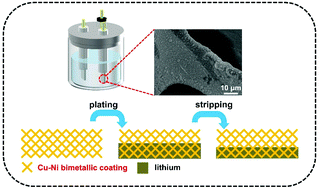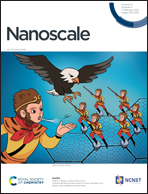Electron cloud migration effect-induced lithiophobicity/lithiophilicity transformation for dendrite-free lithium metal anodes†
Abstract
Enabling stable lithium metal anodes is significant for developing electrochemical energy storage systems with higher energy density. However, safety hazards, infinite volume expansion, and low coulombic efficiency (CE) of lithium metal anodes always hinder their practical application. Herein, a nano-thickness lithiophilic Cu–Ni bimetallic coating was synthesized to prepare dendrite-free lithium metal anodes. The electron cloud migration effect caused by the different electronegativities of Cu and Ni can achieve lithiophobicity/lithiophilicity transformation and thus promote uniform Li deposition/dissolution. By changing the ratio of Cu to Ni, the electron cloud migration can be reasonably adjusted for obtaining dendrite-free lithium anodes. As a result, the as-obtained Cu–Ni bimetallic coating is able to guarantee dendrite-free lithium metal anodes with a stable long cycling time (>1500 hours) and a small voltage hysteresis (∼26 mV). In addition, full cells with LiFePO4 as a cathode present excellent cycling stability and high coulombic efficiency. This work can open a new avenue for optimizing the lithiophilicity of materials and realizing dendrite-free anodes.



 Please wait while we load your content...
Please wait while we load your content...